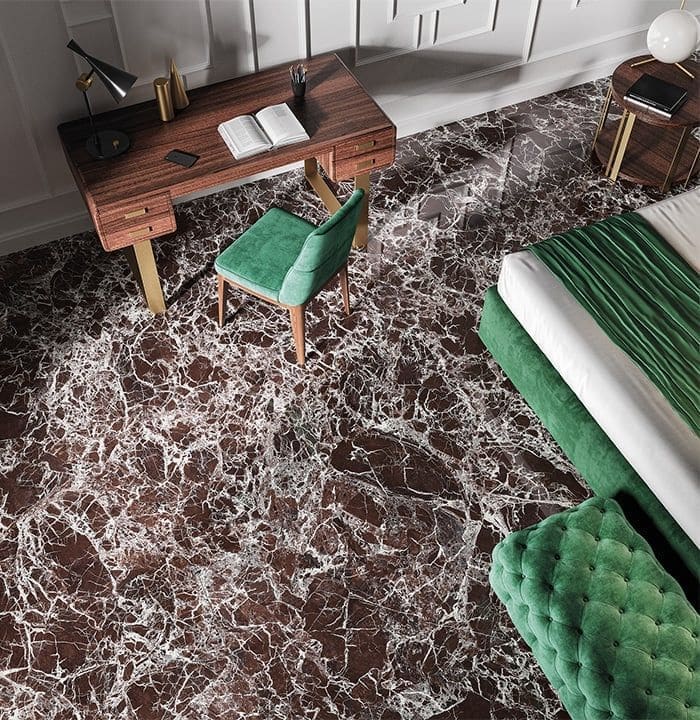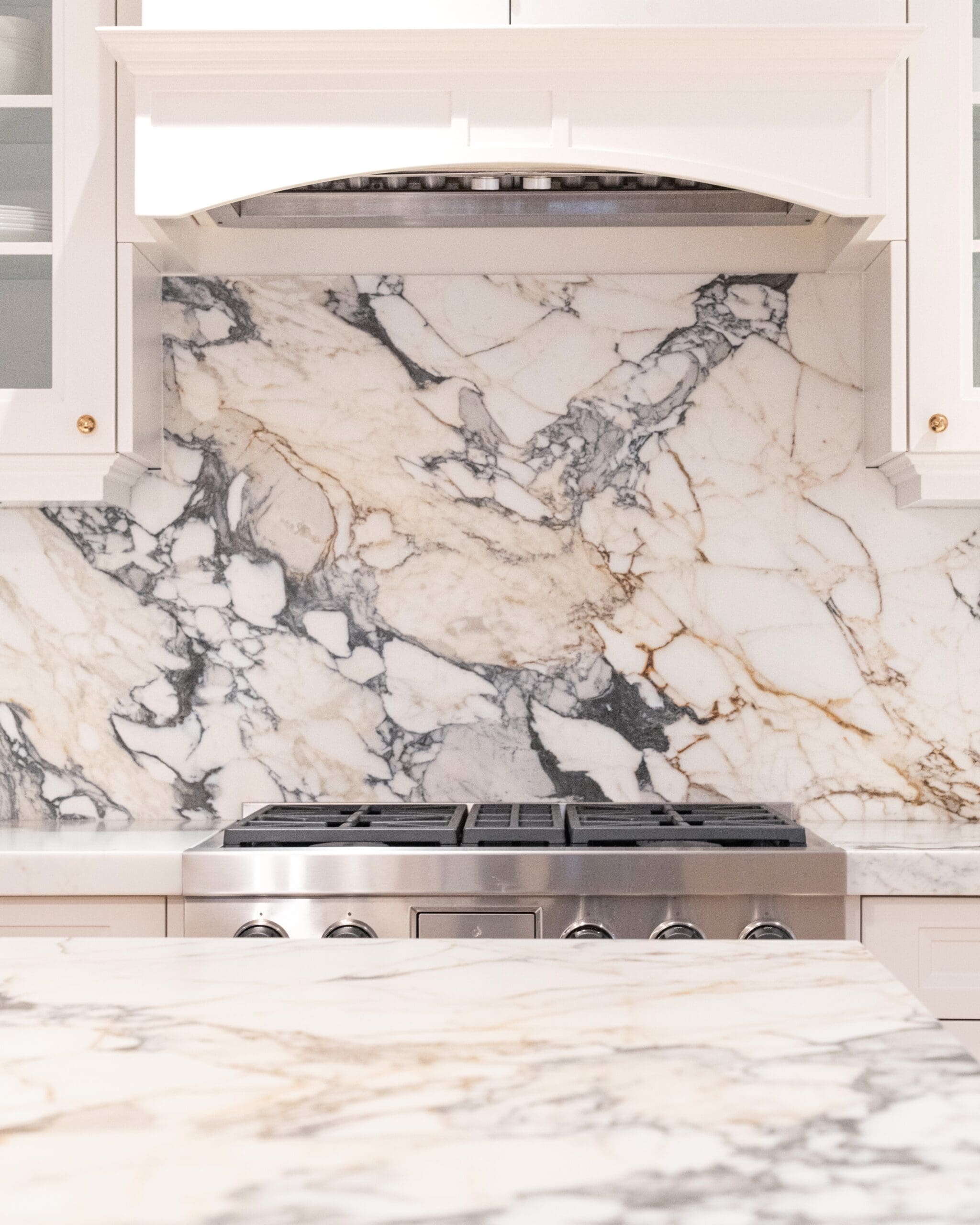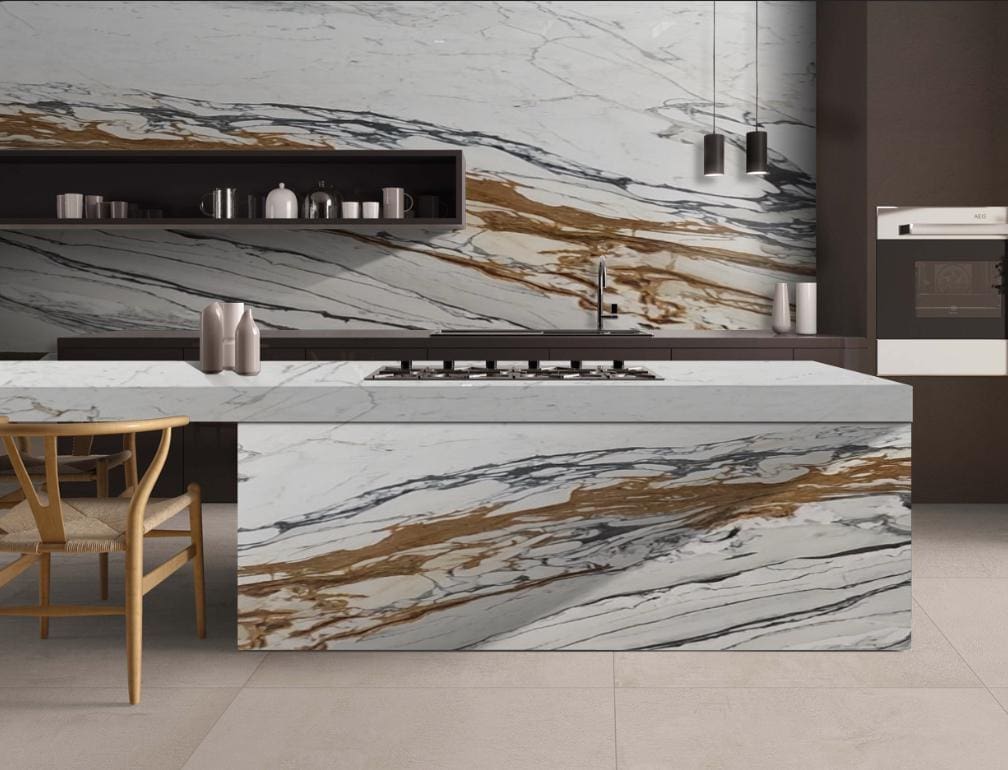Everything You Need to Know About Quartzite Countertop Costs
Are you thinking about quartzite countertops for your home? This guide will reveal all the cost details. You’ll learn about factors that impact pricing, such as material quality and installation complexity.
Discover the cost benefits of quartzite. We also cover popular quartzite variants, additional expenses, and tips on calculating your project cost. This article is packed with insights to help you make an informed decision and budget effectively for your new countertops.
Quartzite countertops are a top choice for homeowners due to their impressive durability and elegant appearance. Formed from sandstone under intense heat and pressure, quartzite is a hard, heat-resistant stone perfect for kitchens and bathrooms. Its unique patterns and colours often resemble marble, offering a luxurious look without the high upkeep.
The cost of quartzite countertops varies depending on factors such as stone quality, slab size and thickness, and installation complexity. Custom edge profiles and additional cutouts for sinks or cooktops can also impact the cost. Understanding these elements will help you effectively plan your budget and achieve your space’s desired aesthetic and functionality. Quartzite countertops not only enhance the beauty of your home but also add long-term value with their durability and timeless appeal.
What is Quartzite?

Quartzite is a natural stone that originates from sandstone through a metamorphic process involving intense heat and pressure. This transformation results in a hard, durable stone primarily composed of quartz crystals.
Quartzite forms when sandstone, rich in quartz, undergoes high temperatures and pressures over millions of years. This process recrystallizes the quartz grains, fusing them into a dense, hard rock.
What Makes Quartzite the Most Popular Material?
Quartzite has become highly popular due to its exceptional blend of beauty and durability. It is natural patterns and colour variations resemble marble, providing an elegant look. Unlike marble, quartzite is incredibly hard, making it resistant to scratches and heat, ideal for kitchen countertops and high-traffic areas. It requires minimal maintenance once sealed, ensuring it remains pristine with little effort. Additionally, its versatility allows it to be used in various applications, from countertops to flooring and wall cladding, making it a preferred choice for both indoor and outdoor designs.
Benefits vs. Cost of Quartzite Countertops
Quartzite countertops combine beauty, durability, and practicality, making them a valuable addition to any home. They offer long-lasting durability, attractive looks, and low maintenance.
While the initial cost might be higher than some other materials, their long-term benefits—such as longevity, cost efficiency, and increased home value—make them a smart investment. Understanding these advantages can help you decide if quartzite is the right choice for your next home improvement project.
Durability and Longevity
Quartzite is an exceptionally hard stone, which makes it highly resistant to scratches and heat. This means your countertops can withstand the daily wear and tear of a busy kitchen and maintain their pristine condition for many years.
Quartzite’s density and toughness make it a reliable option for high-traffic areas. Unlike softer stones, it is less likely to chip or crack, ensuring longevity. The stone’s ability to endure high temperatures without damage is particularly beneficial for kitchen countertops, where hot pots and pans are often placed directly on the surface.
Aesthetic Appeal
One of the main reasons homeowners choose quartzite is its stunning visual appeal. Quartzite features unique, natural patterns and a variety of colours, from whites and grays to more vibrant hues like greens and reds. These patterns can mimic the marble look, providing a luxurious appearance without the associated maintenance challenges.
The natural veining and swirling patterns in quartzite add a touch of elegance and sophistication to any room. Each slab of quartzite is unique, ensuring that your countertops will have a one-of-a-kind look that can enhance the overall aesthetic of your home.
Maintenance Requirements
Quartzite is relatively low maintenance compared to other natural stones. It requires periodic sealing to maintain its resistance to stains and moisture, which helps protect the stone from spills and everyday kitchen messes. Regular cleaning with mild soap and water is usually sufficient to keep quartzite countertops looking their best.
The sealing process is straightforward and can be done annually or biannually, depending on the level of use and type of sealant used. Once sealed, quartzite is highly resistant to staining and etching, making it a practical choice for families and busy households.
Resale Value
Investing in quartzite countertops can significantly increase the resale value of your home. Potential buyers are often drawn to quartzite’s durability, beauty, and low maintenance, making it a desirable feature in any property. High-quality countertops are a selling point that can set your home apart from others on the market.
Quartzite’s luxurious appearance and reputation for durability can make your home more attractive to buyers. The long-term value of quartzite countertops can be seen not only in their lasting beauty but also in their contribution to a higher resale price for your property.
Environmental Impact
Choosing quartzite countertops can have a positive environmental impact. As a natural stone, quartzite is quarried from the earth, which generally has a lower environmental footprint compared to manufacturing synthetic materials. The stone’s longevity also means that it won’t need to be replaced as frequently, reducing waste.
Using natural stone like quartzite helps decrease the reliance on man-made materials that may involve more intensive processing and energy consumption. Additionally, many quarries and suppliers are committed to sustainable practices, minimizing quartzite countertops’ environmental impact.
Cost Efficiency Compared to Other Materials
While the initial cost of quartzite can be higher than some other countertop materials, its durability and low maintenance make it a cost-effective choice in the long run. Unlike materials such as laminate or tile, Quartzite does not require frequent repairs or replacements, which can wear out more quickly.
Investing in quartzite countertops pays off over time as they continue to look beautiful and function effectively with minimal upkeep. Their resistance to damage means fewer expenses related to repairs or resurfacing, making them a smart financial choice.
Installation Costs
Due to the stone’s hardness and weight, installing quartzite countertops can be more complex and costly. Professional installation is essential to ensure the countertops are properly supported and finished. Skilled labour and specialized tools are required to cut and fit the slabs precisely, contributing to the overall cost.
Despite the higher installation costs, the benefits of having expertly installed quartzite countertops are worth the investment. Proper installation ensures that the countertops are secure, level, and able to withstand daily use without issues. The expertise of professional installers guarantees a high-quality finish that enhances the appearance and functionality of your countertops.
Factors Affecting Quartzite Countertop Costs
Understanding the various factors that influence the cost of quartzite countertops is essential for effective budgeting and decision-making. These key elements can better estimate the total cost and plan your project accordingly.
This knowledge helps you achieve the desired look and functionality within your budget. Despite the higher initial cost, quartzite countertops offer long-term value through their durability, aesthetic appeal, and low maintenance, making them a worthwhile investment. Here’s a detailed look at the factors affecting quartzite countertop costs.
Quality and Rarity of Quartzite
The quality and rarity of quartzite slabs significantly impact their cost. High-quality slabs with unique patterns and rare colours are often more expensive due to their limited availability and aesthetic appeal. For example, slabs with distinctive veining or unusual colors are highly sought after, driving up their price.
Slab Size and Thickness
The size and thickness of the quartzite slabs you choose also play a crucial role in determining costs. Larger slabs minimize seams and provide a more seamless look, but they come at a higher price. Thicker slabs, typically 3 cm versus the standard 2 cm, offer enhanced durability and a more substantial appearance, but they also require more material, increasing the cost.
Custom Edge Profiles
Custom edge profiles can add a decorative touch to countertops and increase costs. Simple edges like straight or eased are less expensive, while intricate designs like ogee or waterfall edges require more skill and time to create, raising the price. Custom edges enhance the overall look but add to the overall expense.
Installation and Labor Costs
The complexity of installation impacts the total cost. Quartzite is a heavy and hard stone that requires skilled labour for proper handling and installation. Factors such as the countertop size, the number of seams, and the difficulty of the installation site (like tight spaces or complex layouts) can increase labour costs. Additionally, installing large slabs or intricate designs can be more labour-intensive, further driving up costs.
Additional Costs and Fees
Beyond material and installation, several additional costs can influence the overall price of quartzite countertops. Sealing is necessary to prevent stains and moisture damage and is typically done annually. Cutouts and customizations for sinks, cooktops, and faucets add to the cost, as each cutout requires precise work, increasing labour and material expenses. Transport fees can vary depending on the distance from the supplier to your home and the size and weight of the slabs, with additional costs incurred to transport heavy slabs and avoid damage safely.
Breakdown of Quartzite Countertop Costs
Understanding the detailed costs associated with quartzite countertops can help you budget effectively. Here’s a closer look at the primary cost components. Considering these factors, you can better understand the investment required for quartzite countertops. This comprehensive understanding will help you make informed decisions and plan your project budget effectively, ensuring you get the best value and desired results for your home.
Average Cost per Square Foot
Quartzite countertops, including installation, typically cost between $60 and $120 per square foot. The price depends on factors such as the quality and rarity of the quartzite and the supplier. Higher-quality or exotic varieties with unique patterns and fewer imperfections are more expensive. Suppliers’ prices can also vary based on location and sourcing methods. While opting for high-quality, rare quartzite can increase initial costs, it offers distinctive aesthetic appeal and long-term value.
Cost Comparison with Other Materials
| Material | Cost per Square Foot | Durability | Aesthetic Appeal |
| Quartzite | $70 – $120 | ✅ Extremely durable, resistant to heat, scratches, and stains |
✅ Luxurious, marble-like appearance with unique patterns
|
| Granite | $40 – $100 | ✅ Durable but less than quartzite |
❌ Lacks the luxurious appearance of quartzite
|
| Porcelain | $60 – $100 | ✅ Durable, resistant to heat and stains |
❌ Lacks the natural beauty and unique patterns of quartzite
|
| Quartz | $50 – $120 | ✅ Consistent in color and pattern, durable |
❌ Does not have the unique natural appeal of quartzite
|
| Marble | $75 – $250 | ❌ Less durable, prone to staining and scratching |
✅ Elegant and visually appealing but less durable
|
Quartzite is often compared to other popular countertop materials to help homeowners decide. Here’s a comparison:
Granite
Granite countertops typically cost between $40 and $100 per square foot. While durable and available in various patterns, granite lacks the luxurious appearance of quartzite.
Porcelain
Porcelain countertops cost between $60 and $100 per square foot. They are durable and resistant to heat and stains, but they often lack the natural beauty and unique patterns of quartzite.
Quartz
Quartz countertops usually cost between $50 and $120 per square foot. Quartz is an engineered stone that offers consistency in color and pattern, but it does not have the unique natural appeal of quartzite.
Marble
Marble countertops range from $75 to $250 per square foot. Although marble is elegant and visually appealing, it is less durable and more prone to staining and scratching than quartzite.
Popular and Trendy Quartzite Variants at Better Marble
Several quartzite variants stand out at Better Marble for their unique beauty and popularity. Here are five of the most trendy quartzite products available:
1. Cristallo Bianco

Cristallo Bianco is an exotic and famous quartzite known for its crystallized appearance, resembling a diamond. This transparent stone is unique for its ability to transmit light, making it a stunning choice for countertops and backsplashes where lighting can enhance its natural beauty.
2. Thunder White

Thunder White quartzite blends grey and white tones with subtle veining. This elegant stone adds a touch of sophistication to any kitchen or bathroom, providing a timeless look that complements various design styles.
3. Monte Cristo Polished/Honed

Monte Cristo quartzite is available in polished and honed finishes, offering versatility for different aesthetic preferences. Its intricate patterns and mix of white, grey, and beige tones make it a popular choice for those seeking a classic yet distinctive look.
4. Black Tempest

Black Tempest quartzite is distinguished by its deep black background with striking white and grey veining. This bold and dramatic stone is perfect for creating a luxurious and contemporary atmosphere in any space.
5. Soapstone Black

Soapstone Black quartzite combines the classic appeal of soapstone with the durability of quartzite. Its dark, rich tones and smooth texture make it a versatile option that can fit both modern and traditional designs.
Explore these popular quartzite variants at Better Marble to find the perfect fit for your design needs. Take advantage of our clearance sales and save on select quartzite products. Visit Better Marble today to learn more!
Cost Calculator
To estimate the total cost of your quartzite countertop project, consider the following steps:
Step-by-Step Guide to Accurate Measurements
Tools You’ll Need:
- Tape measure (preferably a steel one)
- Pencil and paper or a digital device
- Calculator
Measure the Length:
- Measure the length of each countertop section from one end to the other.
- Record the measurement in inches or feet.
Measure the Width:
- Measure the width from the back wall (or edge) to the front edge.
- Record the measurement in inches or feet.
Measure Cutouts:
- Measure the dimensions of cutouts for sinks, cooktops, or faucets.
- Record the length and width of each cutout.
Double-Check Your Measurements:
- Re-measure each section to ensure accuracy.
- Double-check both length and width for each section to catch any mistakes.
Calculate the Total Square Footage:
- Multiply the length by the width for each section to get the square footage.
- Add the square footage of all sections together for the total area.
Consider Overhangs and Edges:
- Measure overhangs or custom edges if applicable.
- Overhangs typically add a few extra inches to the width.
Sketch a Diagram:
- Draw a simple diagram of your countertop layout.
- Label each section with its measurements.
- Include any cutouts in the diagram.
Conclusion
Quartzite countertops are an excellent investment for homeowners seeking a blend of beauty, durability, and practicality. This guide has provided comprehensive insights into the costs of quartzite countertops, including factors that impact pricing, such as material quality, slab size and thickness, and installation complexity.
Quartzite’s unique patterns and colours offer a luxurious appearance that resembles marble but with greater durability and lower maintenance. This makes quartzite an ideal choice for high-traffic areas like kitchens and bathrooms. Additionally, the various benefits, such as long-term durability, aesthetic appeal, and low maintenance, make quartzite a smart investment despite the higher initial cost.
By understanding the detailed cost components—including the average cost per square foot, cost comparisons with other materials, and additional fees—you can effectively budget and plan your quartzite countertop project. This includes choosing the right quartzite variant, accounting for installation and labour costs, and factoring in custom edge profiles and additional cutouts.
Furthermore, we’ve highlighted five popular and trendy quartzite variants available at Better Marble, each offering unique aesthetic and functional benefits. By considering these options, you can find the perfect quartzite to enhance the beauty and value of your home.
Finally, using the cost calculator guide provided, you can accurately measure and estimate the total cost of your quartzite countertop project, ensuring you stay within your budget and achieve the desired results for your space.
Take advantage of the current offers and explore the wide range of quartzite options available at Better Marble. Investing in quartzite countertops will not only elevate the aesthetic appeal of your home but also provide long-term value and satisfaction. Visit Better Marble today to discover more and get started on your home improvement project!
FAQ
- What are the best uses for quartzite countertops?
Quartzite is ideal for kitchen countertops and bathroom vanities and is a durable surface for outdoor kitchens. Its resistance to heat, scratches, and stains makes it suitable for high-use areas.
- Are there any downsides to quartzite countertops?
The main downsides of quartzite are its cost, which is higher than some other countertop materials, and the need for periodic sealing to maintain its non-porous properties. Additionally, because it is a hard stone, it requires professional installation to ensure a proper fit and finish.
- Can quartzite countertops increase home value?
Yes, quartzite countertops can significantly increase home value. Their luxurious appearance, durability, and longevity make them desirable for potential home buyers.
- How do you maintain quartzite countertops?
Quartzite countertops require sealing to prevent stains and moisture absorption. It is recommended to reseal them annually. Daily cleaning can be done with mild soap and water or a stone cleaner. Unlike marble, quartzite is resistant to etching from acidic substances.
- How do quartzite countertops compare to granite and marble?
Quartzite offers durability closer to granite and the aesthetic appeal of marble. It is more durable and heat-resistant than marble, making it better suited for kitchen applications. Unlike granite, quartzite doesn’t have as many colour variations but provides a more consistent look with similar toughness.











